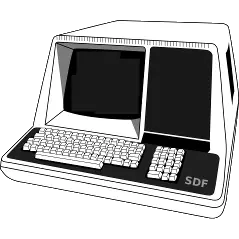

Would someone here care to share what they know about prions?


Would someone here care to share what they know about prions?


I think that’s a good way to describe it. Wasn’t groundbreaking, didn’t get much fanfare, but I enjoyed it well enough and would probably watch it again.


I like sci-fi and fantasy films, too, but most of the Japanese ones that come to mind are very well known already, so I’ll include some other stuff as well:
Seven Samurai (1954)
The Castle of Cagliostro (1979)
Tampopo (1985)
Minbo (1992)
Shall We Dance? (1996)
After Life (1998)
Spirited Away (2001)
5 Centimeters per Second (2007)


deleted by creator


It might be interesting to determine whether the freezes are limited to Plasma or are happening within the kernel.


It doesn’t solve this problem, but it could be useful some day. Bookmarked; thanks.


How much worse can they get
I think kbin.social showed us that overload can get much worse.


Hours wouldn’t raise my attention. I’m talking days.
I think they might be using some weird shit for “last mile”.
Given that lemmy.world uses Cloudflare, I wonder if their server is overloaded enough to sometimes exceed Cloudflare’s 100 second timeout, triggering http-524 errors during federation.


Completely off-topic:
I’m surprised to learn from the comments here that people on other instances subscribe to this sdf-specific community. I have no idea why they would, but it somehow makes me happy.


Thanks, but the posts in question are not showing up on your instance, either.


Would a federation problem on lemmy.world block propagation to slrpnk.net? That would be a weirdly inefficient network design.
That’s (an example of) what I’m seeing right now. It’s abnormal.


Thank you for the suggestion. I watched it and was not disappointed.


Looks like it received this one, but not the ones I mentioned that are in lemmy.world communities.


Arsenic is a naturally occurring element.


I can’t say I’ve ever cooked rice by throwing it into already boiling water though,
Do you mean when replacing the parboil water? At that point, the rice would already have been brought to a boil gradually. Discarding the parboil water and pouring in fresh boiling water wouldn’t be like throwing dry rice into a boiling saucepan.
Or are you thinking of changing your process, by no longer bringing the water to a boil with the rice already in it, but instead waiting to add the rice until after the parboil water has reached a full boil? I realize that’s what the infographic shows, but I don’t think it’s necessary to do it that way. If anything, I would expect your way (bring rice & water to a boil together) to pull out more arsenic.


This will add 15-20 mins more to overall cooking.
Are you counting 5-8 minutes to heat water + 5 minutes parboiling the rice + 5-8 minutes to heat fresh water? If so, you’re double-counting one of those steps, because you already have to heat water when cooking rice. Using your figures, the overall cooking time would only increase by 10-13 minutes.
You could reduce that to ~5 minutes by heating your cooking water during the parboil step, rather than after, so it’s ready to go when the parboil is done. In a kettle or second pan, for example.
You could further reduce it to <1 minute (the time it takes to replace the parboil water) by taking 5 minutes off the cooking time, since the newly added 5 minute parboil is cooking.
I hope the fediverse doesn’t cook meals one step at a time. That would take ages. :)
There was a third Alien movie?
I commented a couple hours ago on a lemmy.world post, and got a reply from another instance. Seemed to be working fine at that time.